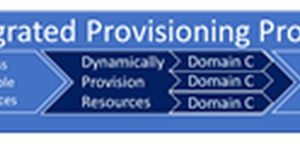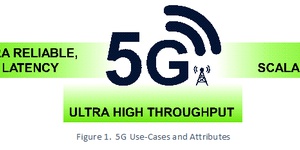
Whitepapers
Do You Have the Right Toolbox for 5G Mobile Transport Network Slicing?

Although network slicing will have a direct impact on mobile dedicated resources and their allocation, it will be the mobile transport network that will connect all the pieces together. Mobile network operators and wholesale transport providers will need a diverse set of transport tools to enable dynamic, deterministic packet delivery from the DWDM optical layer through to the IP layer as well as an open, intelligent controller to assign, monitor and manage resources and to interface with higher order OSS/BSS and service orchestration systems. Network automation and orchestration will also play a critical role in instantiating and manage network slices. To facilitate a best-of-breed approach, network operators should:
- Plan for network architectures where the mobile-dedicated resources and transport resources are from different suppliers.
- Ensure that their mobile transport infrastructure be open and programmable with published APIs and an SDN control framework.
- Adopt a broad toolbox that includes a rich set of IP/MPLS and optical DWDM capabilities.
- Work with an experienced mobile transport vendor with a history of IP and optical deployments.
In a nod toward ECI’s open approach and rich mobile deployment history, Ericsson announced a strategic partnership with ECI for 5G mobile transport in September 2018. The Muse software suite and ECI transport infrastructure solutions will be integrated with Ericsson’s end-to-end solutions for 5G and IoT use-cases. Click to read Network Slicing White Paper.
You might like similar whitepapers


Delivering Policy Continuity at Scale in Cloud IT and Managed Network Services

5G Service Assurance: The Case for AIOps

The Driving Factors behind the Telecommunications Shift to Cloud Metro Networks

The Right Container Platform(s) for Modern OSS and BSS

MODERNIZING THE CABLE SERVICE DELIVERY INFRASTRUCTURE

Global Pricing for SD-WAN

The Economic Benefits of Virtual Edge Services

Broadband Access Transformation

Virtualization Journey: Cable Companies Are on Their Way

Using Open Virtual RANs in 5G

The TCO Benefits of Dell’s Next-Generation Telco Servers

Hybrid Networks: Integrated Provisioning for Virtual and Physical Networks

A TCO Comparison of Private WANs vs Managed Network Services for Enterprises

Tunnel-Based versus Tunnel-Free SD-WAN

Itential Vendor Profile: Automation and Orchestration for Multi-Domain Networks

Always On, Active Analytics and AI for Superior Performance in Digitally Powered Enterprises

AUTOMATING 5G ACCESS DEPLOYMENTS

Achieving End-to-End Intelligence in the Cable Access Network

Accelerating Revenue and Innovation in CSPs' Distributed Clouds

Key CommSoft Learnings from #MWC19

THE POWER OF DIFFERENTIATION: BUILDING BROADBAND FOR 2021 AND BEYOND

The Economic Benefits of a Super-Converged Multi-Access Edge Network

Building the Business Case for AI in Wireless Networks: Juniper Mist AI TCO Report

Orchestrating Dynamic Enterprise Services

THE ECONOMIC BENEFITS OF IP TRANSPORT AT 400G

Lenovo: Data Center Switch Solutions for Enterprise Data Centers

Understanding VRAN

Mitigating Market Challenges in Telecommunications

Simplifying IP Networks

THE BUSINESS CASE FOR ADAPTIVE IP

The Economic Benefits of Distributed Broadband Services

Comparing Broadband Network Architectures in the Evolving Connectivity Landscape

Propelling Operators to L3 Operations Autonomy and Beyond with Huawei ADN

Maximizing Efficiency Using Standards-Based, Model-Driven Infrastructures in NFV Deployments

Building Open, Scalable Service Delivery Infrastructures

The Evolution of Broadband Traffic: A Forecast for the Americas, EMEA, and APAC Regions

Next-Generation Cloud Metro Network Requirements and Architectures

TCO Benefits of Converged 5G Ready IP Transport

AUTONOMOUS NETWORKS POWER INDUSTRY 4.0

AUTONOMOUS NETWORKS: NOW IS THE TIME

INTRODUCING xHAUL REWRITING THE PLAYBOOK FOR TRANSPORT NETWORKING IN THE RAN IN 5G

The TCO Benefits of Distributed Broadband Services with CUPS

Disruption Propelling Massive Changes in Video Market

The Missing Guide in SP Managed Services Profitability





